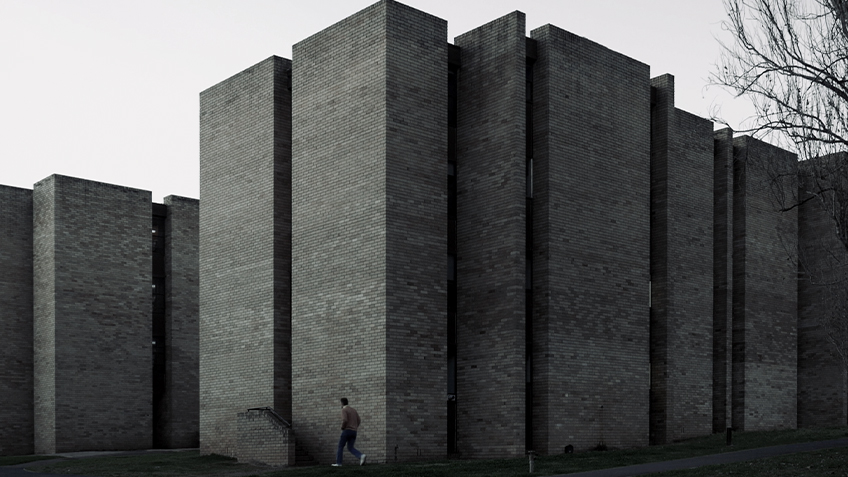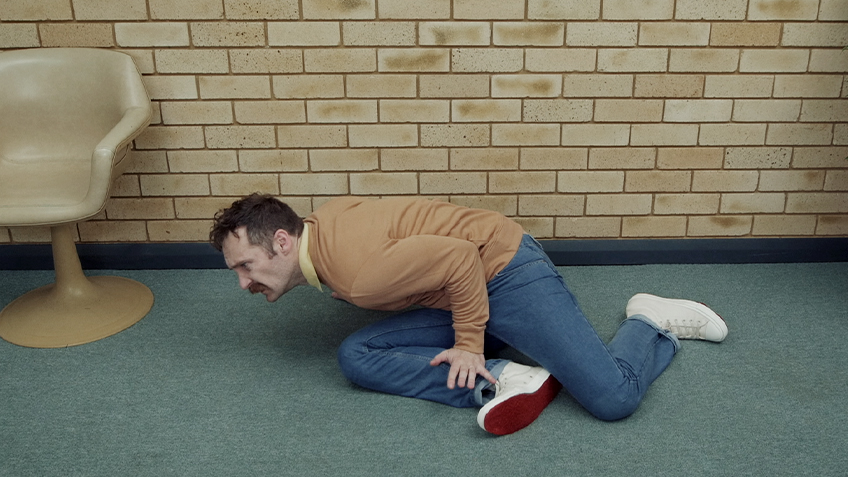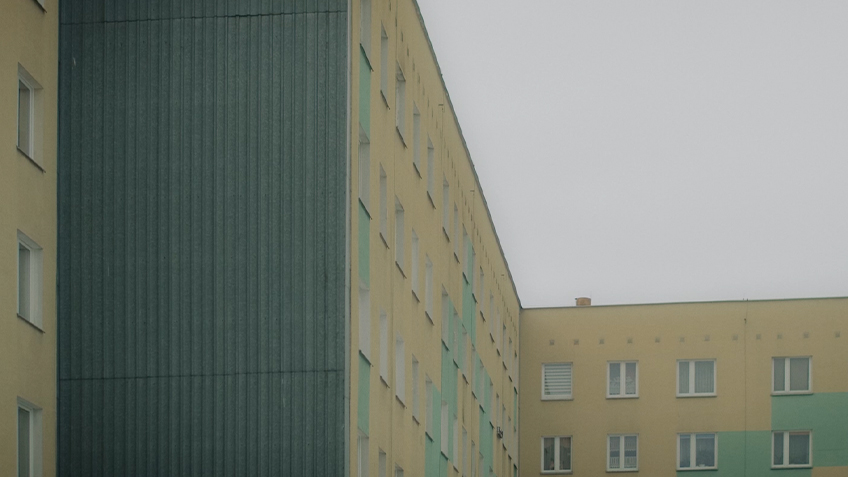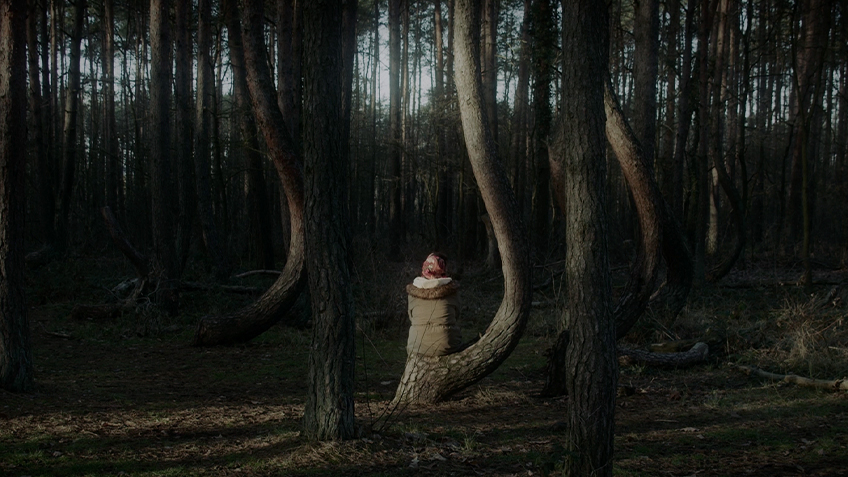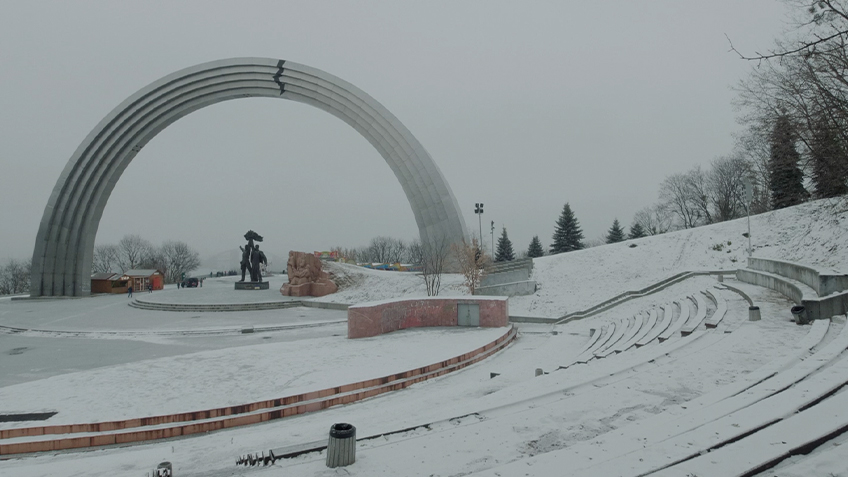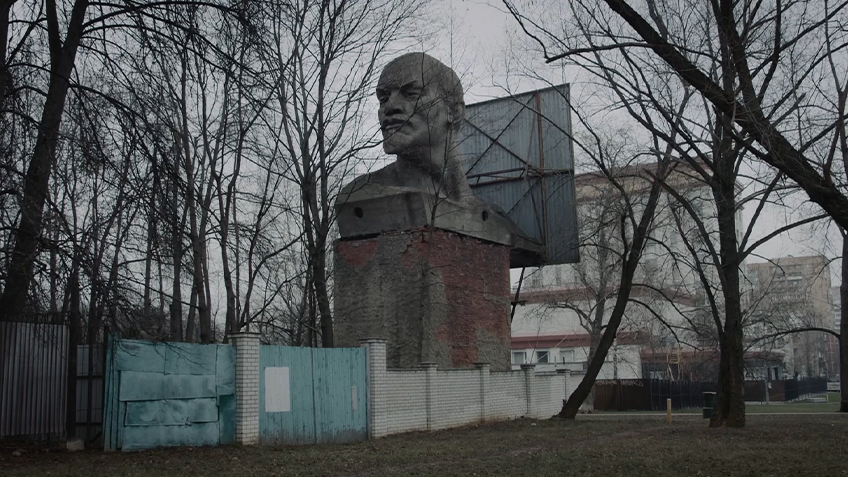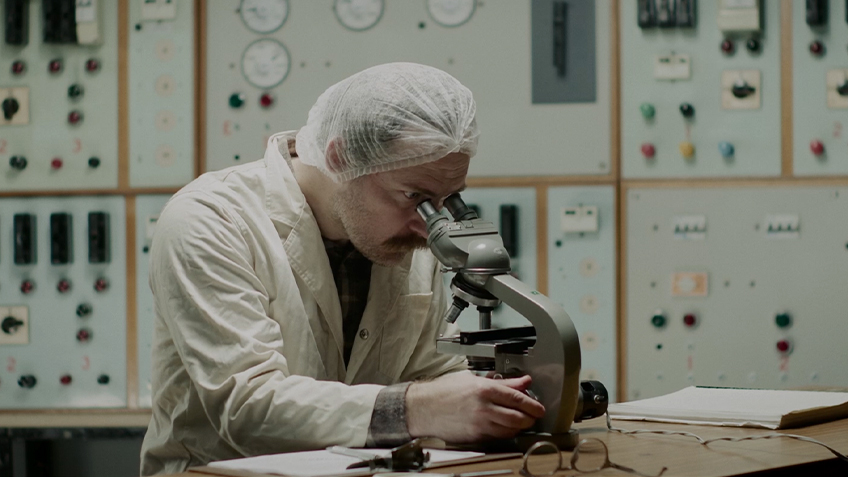During lockdown writer in residence Fiona Kelly McGregor was an audience of one for Kuba Dorabialski’s Invocation Trilogy – a Carriageworks exhibition that migrated online.
Language isn’t just something that we use. It isn’t only an instrument. It is something that articulates and shapes ourselves — and articulates our relationship to the world. We are very deeply constructed by language — and indeed by culture.
– Eva Hoffmann
When the English invaded the continent we now call Australia, along with livestock, liquor and disease, they imported an idea of the continent of Europe that persists in Oceania to this day. Insular and Nordic, it places the Channel at the centre and the Mediterranean at the southernmost tip. To the east beyond Austria lies a vast dun-coloured blur, pierced by the pretty towers of Prague. It is worth taking a closer look at this divisive, hierarchical mindset to understand better our own racial malaise.
Kuba Dorabialski’s The Invocation Trilogy does not offer a prescription. It is in its pursuit of a vision as eccentrically personal as it is culturally and politically determined that this work opens doors. Chances are it would be viewed as just as strange-yet-familiar, and familiarly strange, in Poland and Eastern Europe to which it pays ancestral homage, as it is in Australia, as far away from those places as you can get.
There is a basic aesthetic reason for this, which I noticed when first viewing Floor Dance of Lenin’s Resurrection when it won the 2017 John Fries Award, giving Dorabialski a big boost in the art world. A man is interrogated in an office whose blonde brick wall, old bakelite telephone and cheap formica desk could as easily be found in a block of flats in Dee Why as in Warsaw. Years earlier, in the Polish capital, I was struck by how the Palace of Culture and Science, an iconic building in the centre of the city constructed at the height of the Cold War in 1955, resembled the Chrysler building in Manhattan. The east and west were not as far apart as assumed.
Inspired by a famous series of late 1960s Soviet interrogations, Floor Dance introduced Dorabialski’s ‘shni shni’ – a mongrel mixture of various Slav languages with a Balkan inflection and some Latin derivatives, first crafted at art school in 2000, later refined to a more Slavic ficto-language. The intonation is extraordinarily naturalistic, but only Slav language speakers will understand the details.
The fact that Dorabialski, looking echt Polish, plays both interrogator and interrogated in Part 1 further scrambles things, while remaining consistent to the work’s inner logic. The central question Do you have faith? is salient in the Polish context where the repudiation of communism was co-opted by the Catholic Church in a way that cripples the country to this day. It is and isn’t rhetorical. The interrogated man’s contorted dance might be interpreted as the impossibility of articulating a position; he cannot find words to describe the ‘trouble things’ he is accused of having done. But I got that wrong.
‘No, I’m very partisan,’ Kuba assures me firmly when we meet for a beer at Vic on the Park. ‘I’m Marxist-Leninist to the bone. Deeply, since I was a teenager.
Context is everything. He looks exactly the same as he does in the films: thick moustache, thinning unkempt hair, stocky frame in jeans and t-shirt. Here, he is just another bloke at the pub.
‘In the west, figures like Rosa Luxembourg and Trotsky have a lot of traction, in large part because they were killed. There’s romanticism in that, in failed revolutions. There’s no room for mistakes, for experiments. But when you’re creating something new, there’s inevitably going to be mistakes and tragedy and catastrophic fuck-ups. It’s much easier to commit to something that’s never had any failures but what you lose in that situation is learning from those failures. You know, if a child is learning to walk, it will fall.’
‘Using that analogy, what are some of the failures?’
‘Well, I’m not an economist but I feel like the new economic plan [the move in 1991 from a socialist to a market economy] had positives and were necessary to an extent but maybe went on too long. I feel like direct competition with the west under Stalin was understandable because there was the continual threat of invasion but the way that played out was a mistake: there was paranoia, it was overplayed. Social relations – things like stamping out patriarchy – weren’t as prioritised as they should have been. … in the end the person looking after the children was still the woman. There’s a great quote of Lenin’s where he says that Poland has great revolutionary potential but the big problem is its anti-semitism and its misogyny.’
Gone are the diffuse, ruminative tones of the narrator’s shni shni that coats all three films. Dorabialski’s Australian, apart from easily overcoming the volume of a late afternoon beer garden on one of the first hot days of the season, is inflected with the rising intonations of American English. Apart from the inexorable move of our accent across the Pacific, in 2000, Dorabialski worked for Matthew Barney on The Cremaster Cycle, along with another Eastern European (Czech)-Australian artist, Monika Tichacek.
‘Barney is really hands-on, which set up for me quite early on this idea of being involved in the whole process. He was always there, every step of the way, he didn’t just delegate.
‘His politics haven’t changed. He’s apolitical, which is a position in itself.’
Part homage to Lenin, in the words of Invocation Trilogy curator Daniel Mudie Cunningham, Part 3 – Connection of the Sticks is ‘a sweeping tale where truth and make-believe coalesce as all good mythologies should … a folkloric framework for mysticism and the absurd.’ Scored with Dorabialski’s three obsessions — geography, language and dancing — it has the ambition and scale of cinema yet was made on a shoestring, Dorabialski pushes his auteur status to include acting, writing, directing, cinematography, sound and set design, let alone smaller but crucial jobs of set, prop, costume design and location scouting. Most help came from his family, significantly wife and fellow video artist Katy B Plummer and the Dorabialski clan, including sculptor brother Szymon and sons, Roland and Bruno. ‘Slave labour huh?’ quipped the former, when first engaged to act at the age of 10.
You see the sons growing up, the pre-pubescent Bruno in Seven Revisionists addressing a giant flower-strewn bust of Lenin in heavily accented shni shni. With Roland, he has made a pilgrimage to the bust in a non-specific alpine landscape. The cinematography is achingly beautiful, from wide snowy hills to a creek lined with coarse grasses filled with the fat-bodied chirping of crickets.
Scenes of the boys tramping through snow to lower ground are interspersed with the iconic photograph of the seven leaders of the Warsaw Pact standing in a row, Gorbachev in the middle, in May 1987, that auspicious time when cracks were appearing in the wall. The politicians’ dour thickset features, cheap suits, the grainy black and white 16mm film, the lozenge-like frame with curved corners (which contains all three films), anchor us firmly in the era. The narrator focusses on the leaders one by one, recalling intimate moments in soft, doleful tones.
‘One by one, all of them succumbed to revisionism, bourgeois nationalism and, ultimately, decline,’ Dorabialski opines ruefully in the final minutes of the film. He is now driving, the camera mounted on the dash looking past a pair of Lolita sunglasses to unspooling brutalist freeways. ‘Far from the capitulationists and collaborationists … history will exonerate the key players,’ he concludes with staunch idealism. Cue dance entropy.
I was one of the lucky few who got to see the trilogy installed in Carriageworks before our second wave of Covid-19 shut it down (the venue did its best with an extension but Lockdown cruelly prevailed and the trilogy migrated online). Parts One and Two, respectively 9 and 21 minutes long, showed in a smaller anteroom, Connection of the Sticks filling a wall in Bay 19.
Here the lone viewer could wander literally from one end of the huge screen to the other, beholding in astonishment the endless variegation of snowy landscapes, a ski jumper ascending through the air in delirious slo-mo, the wrinkles on a peasant woman’s face as she lights three cigarettes at once. The textures of green in a young man’s overcoat echoing the winter forest from which he emerges to jump a goods train from Siberia to Poland. This is Bruno, now a teenager, playing Kuba’s grandfather as a young man in one of the film’s first stories.
Dorabialski is equally at home with grand landscapes, industrial settings, the urban fringe, as with scuffed interiors, the body in motion, the face in emotion. He is naturally attuned to the muted palette of the East with its faded materials, cityscapes uncluttered by advertising and incidentally dulled, the stark towers of public housing; the faunal stasis of harsher, longer winters. I have watched the trilogy again and the sedulous composition of both panoramas and close-ups ensures its survival on a laptop.
Dorabialski has spoken elsewhere of the childhood influence on his work of SBS World Cinema (government bodies take note: this is one of the many reasons your funding must continue). ‘I love Tarkovsky, he’s like the father figure, but it’s not necessarily who you wanna hang out with or be with on weekends. I really love Sokurov, another Soviet filmmaker (Russian Ark). A lot of Polish cinema from the 80s, Kieślowski’s 80s stuff.’
Like other artists who have moved from filmmaking to video installation — Steve McQueen, Isaac Julien, or locally Amos Gebhardt and Tina Havelock Stevens — Dorabialski remarks on how the film world remains relatively closed to art, while the art world embraces cinema. He cites the four channel video installation Citizen’s Band by Angelica Mesiti, who studied at COFA in the year above, with enthusiasm.
‘It was so beautiful how everyone engaged with it, people were walking out with tears in their eyes. Video art, ten years ago, people were like, Oh I don’t get it. But this work was successful without being too … graspable.’
‘I was born in Wrocław (an industrial city in the south-west) in the late seventies. My parents were relatively young and bored, both uni dropouts who wanted to do something different, so through some connections they got a passport and while on holidays in Austria they defected. They looked around at what would be an exciting thing to do, at the US and Canada, and decided they wanted to go further. They just wanted to get away from their parents actually (laughs). So we arrived here. We were never particularly entrenched in the Polish-Australian community. Like, we didn’t go to the Polish Club except for occasionally on their smallgoods nights.’
‘I grew up in Eastlakes, basically a Little Poland, with Russians as well. And it’s funny ‘cause it feels like Poland there. Three-four storey red brick flats, built around a courtyard. So it’s built like a post-war planned Polish residential area.’
Dorabialski also has family in one of the housing commission blocks in Redfern Waterloo, up the road from me. Interestingly this community is a combination of gentile and Jew (one night during Yom Kippur, I saw a huge Menorah on Moorhead Street, as seemingly incongruous a sighting as the bust of Lenin in the bush).
Polish emigration to Australia began in the nineteenth century as the country was wracked by uprisings during the decades of European nationalism. Then, the genocidal 1930s and 40s sending mostly Polish Jews but also Slavs, to all corners of the globe. Another wave came after another purge in 1968; more fled Communism in the 1970s and 80s.
‘In the last five or ten years there have been more again. So you have all these different generations with different perceptions and experiences of Poland.’
Intrinsic to Eastern European artmaking is what the Anglo west calls multidisciplinarity. (Witkacy – director, theorist, writer, and pioneering purveyor of hallucinogenic drug use — Dorabialski reminds me, made the first ever film installation performance in the 1920s, ‘Crazy Locomotive’.) Mulitdisciplinarity can feel like a pat word to artists obliged to grind through grant applications several times a year; a term that does not assuage the feeling, for me at least, of a culture unable to come to terms with those of us who practice in a variety of genres. The corollary of this means audiences are not encouraged to move beyond information and entertainment.
This is why Tadeusz Kantor could change the face of twentieth century theatre worldwide; the refracted view an artist skilled as director, writer, set and costume designer, and visual/poster artist, was necessary to shake up a medium that had shrunk into reliance on the text. It is also why I don’t think Dorabialski, even if showered with funding, would relinquish all the creative roles he took on in The Invocation Trilogy.
The Polish design aesthetic – intricate, refined, often scatological, the palette running from primary to earth colours, is also a great influence. ‘There are so many great Polish cinematographers, you know, in the west, to have a Polish last name as a cinematographer is some kind of magical ticket.’
The depth and sophistication of cultural engagement in everyday Poland is due partly to decades of communist rule, which enabled people to go to the opera for a couple of złoty. Restrictions on television and radio paradoxically maintained literature and theatre. Poland isn’t the only nation with the notion of culture being for and by the people, yet comfort with the most abstruse or grim subject matter is its birthright, steeped in tragedy as it is. I witnessed small towns come out in droves to see performance art in 2006.
But that was fifteen years ago, before social media and the internet had a stronghold. Am I being nostalgic? Well, The Invocation Trilogy itself is.
What Dorabialski longs for might never have existed.
He received a rich cultural education growing up. ‘My parents were cinema buffs, you know, my mother was passionate about literature. Theatre has quite an exulted position in Polish culture. In terms of poetry, this is where Polish literature excels.’ Can any other nation boast two Nobel Prize winning (and in my opinion, deserving) poets — Czesław Miłosz and Wisława Szymborska — in one generation? Tadeusz Różewicz, born just two years before the latter, is considered by many to be just as good.
Dorabialski talks of his godfather, Lech Mackiewicz who emigrated after his parents. ‘He’s actually quite a famous actor. He’s gone back to Poland. And he would put on these plays, you know, sometimes with a theatre company, sometimes in a little hole somewhere with two people there. One was inside the brickworks at St Peters. And every month I would go to these plays, like deeply inspired by Brecht and Grotowski and you know, sometimes it was atrocious, sometimes it was interesting. Actually more than anything it made me really dislike theatre? In the early 1990s, Mackiewicz reworked a couple of Gogol stories for Sydney Theatre Company. He also played bit parts in television and theatre. ‘You know, like the foreigner in soap operas. The immigrant.’
Poland is also habituated to the breast-beating pride of a country besieged. As the geographic centre of Europe, for centuries Sweden, the Tartars, Russia, the Soviet Union and more invaded, pillaged, burnt, raped and murdered Poles and Jews in their millions. Despite being poor compared to France – the country so many defected (and looked up) to – Poland is not without its own snobbisms. Ask any Slav and they will moan about how Poland thinks it’s top dog in their sphere. And those Polish-Melbourne Jews who look down on the Hungarian-Sydney ones. And so it goes on, back to the old divided Europe.
That Poland was also once the centre of European Jewry is one of the tragedies it hasn’t yet come to terms with. The west stole the losers along with the winners: the Anglosphere has still not grasped how Eastern Europe was the crucible of the Holocaust. Both implication in and recovery from this are hampered by the disregard that western Europe perpetuates. Every time I hear somebody extol the virtues of Germany in Holocaust reparations, I want to remind them that the bedrock of German wealth, which dominates Europe, and is a linchpin of the International Monetary Fund — are the profits that companies Hugo Boss, BMW, Siemens and more, made from the enslavement of Jews and Slavs.
Such was the wealth and variety of Polish Jewish culture that writers such as Bruno Schulz didn’t know Yiddish whereas Isaac Bashevis Singer, just a few hundred kilometres away working a similar vein of fabulist short story, wrote in Yiddish his whole life being from a rabbinical family. The difference was irrelevant to the Nazis, who shot Schulz in 1942 when he was walking home to the ghetto of Drohobych. Singer escaped to America and lived for many more years, assuring a wider audience.
Dorabialski considers his work within the context of magical realism, distinguishing the Polish variant from the Russian by its inflection with Catholic mysticism, the Russian variant having ‘maybe more of a peasant feudal sort of nihilism, I guess.’
I had to keep reminding myself of how rich in Jewish lore Eastern Europe is as I watched Connection of the Sticks because it is not spelt out. It can meld with Catholic and pagan mysticism, the trilogy as a structure being one of the most basic tenets of Judeo-Christianity. The three cigarettes, the three people seated on the ground at the end of Part Two, shot from above; three times the same building — a typical public housing block with its sheer walls and pastel green and yellow geometric pattern — appearing in three different stories. Language, geography, dancing.
In a haunting sequence shot through the ruins of Chernobyl, again snowbound, a story is told about Hassidim. It sounds like fiction — a compelling ghost story — but in fact it is true that Chernobyl was the locus of one of the most important Hassidic movements begun in the C18, making it a site not just of nuclear disaster tourism, but also a pilgrimage for devout Jews.
Dorabialski’s grandmother’s family were Ukrainian Jews but the unease remains.
‘Within my own family it’s always been a question of who was hiding it. My father has Slavic features and my mother basically looks like Nazi propaganda. My grandfather was always like, your great-great-grandfather was Tartar and another one was Armenian, and your great-grandmother is Ukrainian, and you know, all these Eastern European ethnicities, but “No, I don’t know about any Jewish.” There’s definitely a lot of racist denial.’
‘Figures like Bruno Schulz; Poles are still debating whether or not he’s Polish, or just a Jew living in Poland. And anti-Semitism has spiked again.’
In contemporary times, queers have been the main targets of hatred, with one third of the country’s municipal councils recently declared ‘LGBTIQ-free zones’.
Connection of the Sticks proceeds in vignettes, each just a few minutes long. ‘I’m not allowed to explain it entirely,’ Dorabialski as narrator, tells us in the introduction. There are nineteen sites where each takes place, the connections between which are ‘sometimes dim. At other times the connections are strong as steel.’
It turns out most of the sites are in Russia. One remembers when the map comes up how big this land mass is, almost as big as Australia. Family stories abound, such as the aforementioned one in which Bruno plays his great-grandfather jumping a goods train back to Poland. In the opening story, the narrator’s grandmother is in a remote cottage when a Nazi stumbles in, to his detriment.
‘I like the idea of the matriarch of the family killing a Nazi with a loaf of bread.’ This story, like many, is conveyed with long still shots: a field of dead sunflowers, ready for harvest; windmills, stationery; a hut deep in snow; shot closer, from the side. Looking at the greying timber walls and the eddying snow, listening to Dorabialski’s gentle, insistent shni shni, increases the sense of the apocryphal and hermetic.
Conceiving Connection of the Sticks as ‘about Eastern Europe as a cultural phenomenon, one that doesn’t even exist within Eastern Europe in quite the same way,’ leaves Dorabialski the freedom to play with fact and fiction. That Olympic ski jumper? She collided mid-air with ball lightning. Yup. It happened in Nizhny Tagil, Russia. Or did it? I wouldn’t have a clue.
‘There were two basic threads I wanted to maintain. One was to critically rehabilitate the socialist project of the 20th century. Hold up the failures and shortcomings and kind of learn from them, in order to take from the strengths and the positives and keep moving forward rather than outright rejecting socialism. The other was to sync up the mystical with radical politics. In my PhD, I’m working on what I call the ‘transrational impulse’ in Eastern European screen-based art. It points at spirituality and mysticism but doesn’t have an association with them. It points at the supernatural and unexplained, that which is outside of language. Transrational is a term that has its roots in early 20th century poetry.
‘There is something that is bigger and deeper, historically as well as elementally, all the way down to Bulgaria and across to the Urals and through Poland and in between, and I kind of posit that it’s common pagan roots? They kind of run through there. There is this very strange affinity. On paper there isn’t, and diplomatically and historically quite definitely not, but I’ll go to Moscow and the connection I feel there is very different than if I go to France.
‘It’s funny ‘cause Poles here, when they hear me, think, Oh that’s a funny idiom, that’s a funny way of speaking. But when I go to Poland they’re like, Oh you’re Polish. Poles always claim everyone is Polish. Marie Curie had an expression for it: ‘Even the elephant is Polish.’ Trashy newspapers in Poland say it about everyone. Even at one point when Obama won the election, apparently some papers were saying like, “Obama has Polish roots!” Unless someone shows an unfavourable trait then it’s like ‘They’re Jewish. So Yeah but No’.
Despite the bookending of the trilogy by the potent dates of 1917 and 1991, and Dorabialski’s own convictions, the oblique nature of the political references, particularly in Part Three, is what gives them resonance. In Smolensk, Russia, over the decades, a multitude of plane crashes killed political leaders, most recently Lech Kaczyński, President of Poland (2005-2010), twin brother of the incumbent arch-conservative Prime Minister Jarosław. It could have been fog. The Russians did it, Dorabialski narrates. No, it was witches – probably lesbians – and/or communists.
Perhaps the most memorable vignette is the sequence of Lenin statues. We are told they once numbered in the thousands (even though Lenin didn’t believe in heroic monuments) but now there are only several hundred. From panning shots, through a forest, to public squares emptied of people and white with snow, Lenin appears standing, striding, hailing, hand in pocket, hand on lapel, in bust form only. A litany of adjectives in shni-shni flows in lyrical accompaniment:
the damaged Lenin
the mythical Lenin
protective Lenin
jaded
fatherly
grandfatherly …
At the very end, the map of Eastern Europe surfaces again and the dots of all the sites are joined. These are the sticks of this film essay, fantastical memoir, chimerical homage, art installation, cinematic extravaganza. Connected, they spell Lenin’s name in Cyrillic capitals.
Written by Fiona Kelly McGregor.
